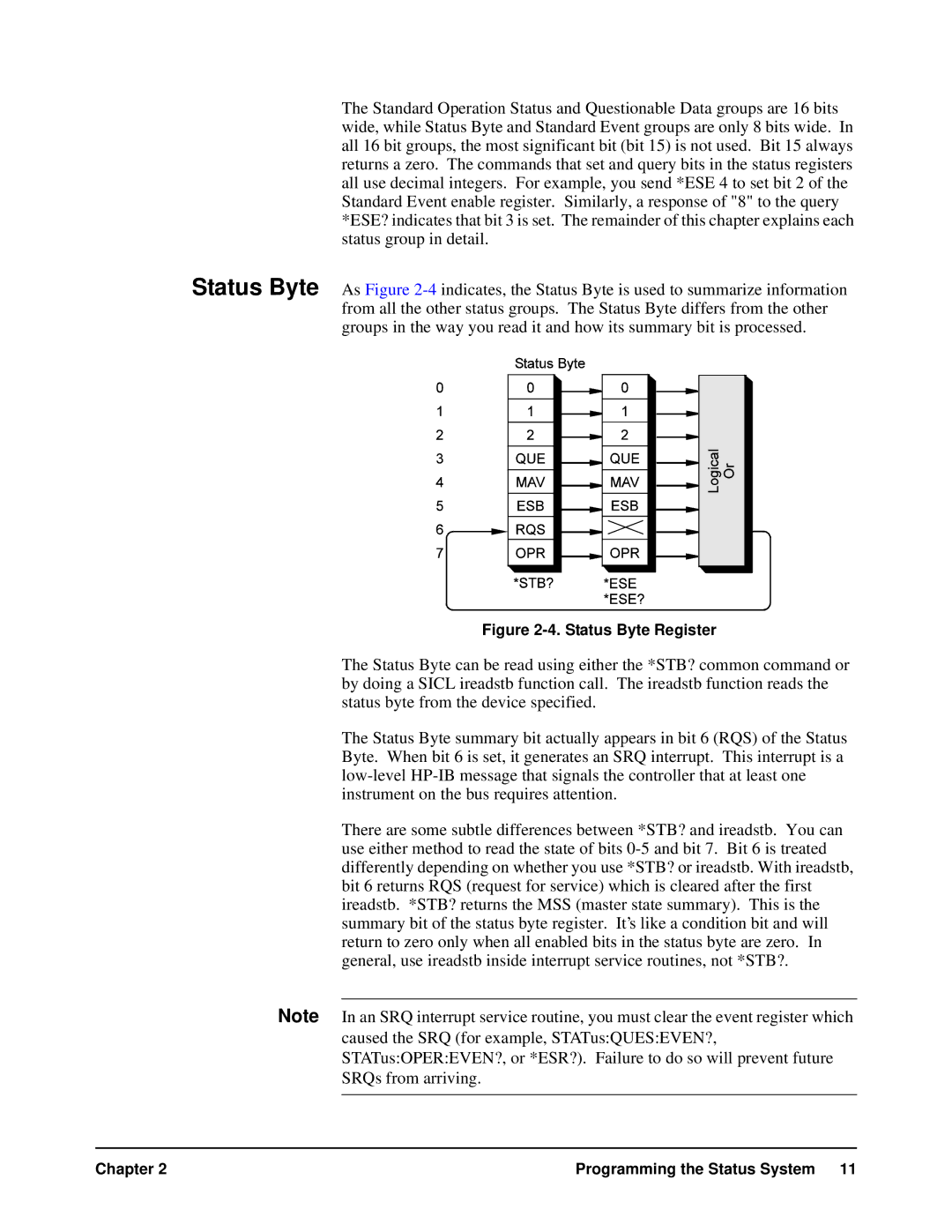
The Standard Operation Status and Questionable Data groups are 16 bits wide, while Status Byte and Standard Event groups are only 8 bits wide. In all 16 bit groups, the most significant bit (bit 15) is not used. Bit 15 always returns a zero. The commands that set and query bits in the status registers all use decimal integers. For example, you send *ESE 4 to set bit 2 of the Standard Event enable register. Similarly, a response of "8" to the query *ESE? indicates that bit 3 is set. The remainder of this chapter explains each status group in detail.
Status Byte As Figure
Figure 2-4. Status Byte Register
The Status Byte can be read using either the *STB? common command or by doing a SICL ireadstb function call. The ireadstb function reads the status byte from the device specified.
The Status Byte summary bit actually appears in bit 6 (RQS) of the Status Byte. When bit 6 is set, it generates an SRQ interrupt. This interrupt is a
There are some subtle differences between *STB? and ireadstb. You can use either method to read the state of bits
Note In an SRQ interrupt service routine, you must clear the event register which caused the SRQ (for example, STATus:QUES:EVEN?, STATus:OPER:EVEN?, or *ESR?). Failure to do so will prevent future SRQs from arriving.
Chapter 2 | Programming the Status System 11 |
